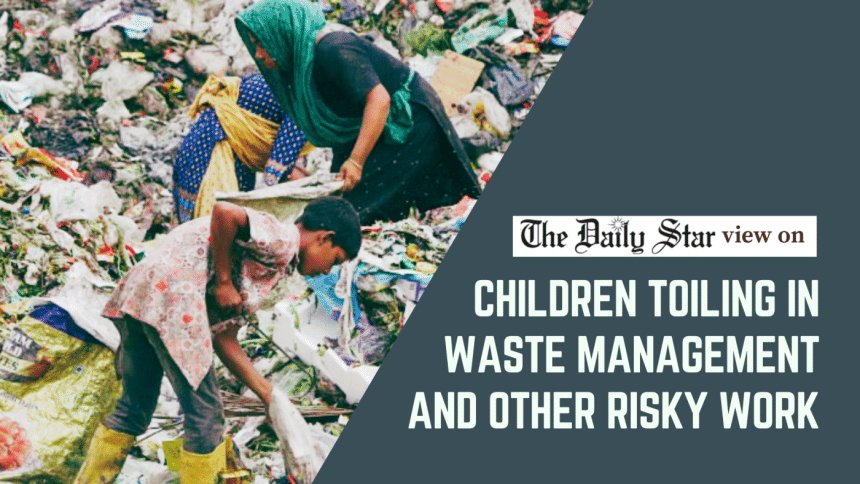It is concerning that children are being employed in inappropriate and often dangerous work environments. A recent report on child labor revealed that children as young as eight years old are working at the Secondary Transfer Stations (STS) of both Dhaka South and North City Corporations. Many of these children have moved from outside Dhaka or have been living in the city’s slums for some time. Poverty and lack of support from families and the government have driven these children to work at waste management sites.
For example, Raza, who is now 18, started working at an STS in Ward-10 of DSCC at the age of eight after his father passed away. He never had the opportunity to attend school. Similarly, Shadhin, aged 13, came from Sherpur due to poverty to work at another STS. Instead of enjoying their childhood through learning and playing, these children spend their days laboring in garbage fields, jeopardizing their health and sacrificing their futures. This situation is unacceptable as engaging children in waste management not only violates their rights but also exposes them to severe health risks. These children often sustain injuries from sharp and contaminated objects, putting them at risk of diseases such as hepatitis B, HIV/AIDS, and chronic infections. Many also suffer from malnutrition, respiratory issues, and skin diseases. The question remains: why does child labor persist, with 1.776 million children in the country still trapped in this cycle?
Although laws like the Labour Act 2006 and the National Child Labor Elimination Policy 2010 exist, they are frequently not enforced. Some provisions in these policies are ambiguous and inadvertently allow for child labor. For instance, while the Labour Act stipulates that the minimum employment age is 14, it permits children aged 12-14 to engage in “light work” if it does not interfere with their education and development. Furthermore, the government has identified 38 sectors as hazardous for children, prohibiting anyone under 18 from working in these areas. Despite this, 1.068 million children are still employed in these sectors, including welding, transportation, auto workshops, tobacco factories, and battery recharging. Many more children remain unaccounted for, especially in informal sectors like waste management.
To effectively combat child labor, we must address the legal loopholes that allow it to persist and prioritize its eradication at a national level. This entails not only enforcing existing laws but also investing in children’s education and supporting vulnerable families through strong social safety nets and livelihood assistance. No child should be compelled to choose work over education.

